산업기술








IPC(Institute of Printed Circuits)는 PCB 및 전자 조립 산업에 서비스를 제공하는 글로벌 무역 협회입니다. IPC는 일부 검사 지침을 시행하여 제조된 PCB 및 PCBA의 품질을 검증합니다. IPC에는 PCB 제조업체가 PCB를 제조할 때 준수해야 하는 몇 가지 지침이 있습니다. 가장 기본적인 두 가지 IPC 지침 문서는 IPC-6012와 IPC-A-600입니다. IPC-6012는 강성 PCB의 자격 및 성능 사양을 다룹니다. 반면에 IPC-A-600은 PCB의 수용 가능성을 다루고 있습니다. 최근 IPC-A-600이 가장 많이 사용되고 널리 인정되는 문서인 것 같습니다. 이 기사에서는 PCB 생산에서 IPC-6012 및 IPC-A-600의 중요성을 강조합니다.
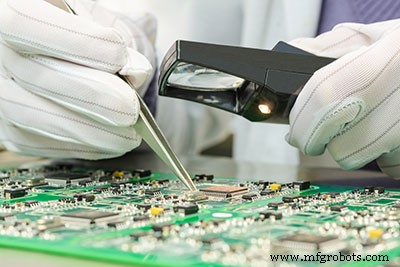
IPC(Institute of Printed Circuits)는 전자 상호 연결 산업을 지도하는 평판 좋은 국제 기구입니다. 이는 이 업계에서 사업을 하는 기업이 따라야 하는 변화와 표준을 통해 이루어집니다. IPC는 회원이 4,000개 이상의 회원사로 증가하는 것을 본 헌신적인 협회입니다.
인쇄 회로 연구소(Institute of Printed Circuits)는 설계, PCB 제조, 전자 조립 및 최종 테스트와 같은 업계의 기본 요소/치수를 나타냅니다. 인쇄 회로 연구소는 회원 중심의 단체입니다. 이러한 이유로 업계 표준, 시장 조사, 교육 및 공공 정책 옹호의 소스 역할을 합니다.
또한, Institute of Printed Circuits는 글로벌 전자 산업에서 거의 2조 달러에 달하는 요구 사항을 충족하는 여러 프로그램을 지원합니다. 1957년에 설립되어 일리노이에 기반을 둔 IPC는 PCB 제조업체가 항상 준수해야 하는 여러 PCB 표준을 자체적으로 보유하고 있습니다.

(ipc의 하이테크 사진)
PCB 설계를 시도한 다음 제조업체에 보냈지만 IPC 표준을 무시했기 때문에 PCB를 제조할 수 없다는 사실을 알게 된 적이 있습니까? 이것은 많은 PCB 설계자가 거의 매일 직면하는 문제이기 때문에 혼자가 아닙니다. 지연이나 어려움 없이 보드를 생산하려면 IPC 표준을 준수해야 합니다.
IPC 표준을 준수할 필요가 있습니까? IPC 표준이 중요한 몇 가지 근본적인 이유가 있습니다. 첫째, IPC 표준은 설계자와 제조업체가 제품을 제조하기 전에 많은 시간을 절약하는 데 도움이 됩니다. IPC 검증을 수행함으로써 설계자와 PCB 제조업체는 리콜 이벤트에서 재작업하는 데 필요한 많은 시간을 절약할 수 있습니다.
또한 신뢰할 수 있고 안전한 고성능 PCB를 제조하려면 전체 생산 공정에서 세부 사항에 대한 주의와 품질에 대한 약속이 필요합니다. IPC 표준을 준수함으로써 인쇄 회로 기판은 이를 매우 쉽게 달성할 수 있습니다. 기업이 고객의 기대를 충족하거나 그 이상을 달성하는 신뢰할 수 있는 고품질 제품을 제조하려면 IPC 표준을 준수해야 합니다.
그러한 의지는 결국 회사를 경쟁력 있고 수익성 있게 만듭니다. 또한, 그것은 향상된 의사 소통을 가져옵니다. 이러한 표준을 준수함으로써 기업은 내부 및 외부 커뮤니케이션 채널을 개선합니다. IPC 표준은 모든 사람이 정해진 기대치에 동의하면서 동일한 용어를 사용하도록 합니다.
또한 IPC 표준을 준수하여 올바른 PCB 서비스 제공업체입니다. 고맙게도 다양한 PCB 제조 회사에서 PCB 제조 비용을 절감할 수 있습니다. 개선된 품질과 잘못된 의사소통으로 인해 재작업 및 지연 가능성이 거의 또는 전혀 없습니다. IPC 표준은 또한 새로운 기회와 함께 향상된 회사 평판을 가져옵니다. IPC의 표준과 같이 국제적으로 인정된 표준을 준수하면 회사에 즉각적인 신뢰를 얻을 수 있습니다.
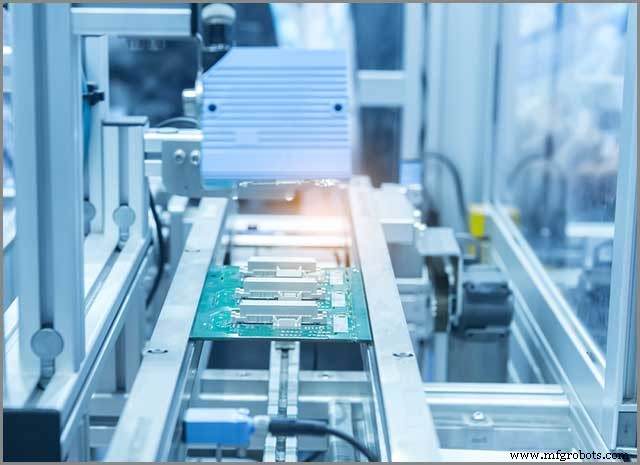
(마이크로칩 생산공장)
PCB 제조업체가 항상 준수해야 하는 IPC 표준이 많이 있습니다. 그러나 앞서 언급했듯이 가장 널리 사용되고 인정되는 것은 IPC-A-6012입니다. 기억할 수 있다면 IPC-A-6012는 전자 조립품의 수용 가능성을 다룹니다. 모든 IPC 표준이 필수적이지만 당면한 상황에 관계없이 무시할 수 없는 것이 있습니다. 그러나 이것이 나머지가 쓸모가 없거나 상당한 관심을 받을 가치가 없다는 것을 의미하지는 않습니다. 가장 기본적인 것들은 다음과 같습니다:
IPC 6012는 HDI 및 패시브/액티브 PCB에 대한 요구 사항의 성능 및 자격을 설정하고 정의하기 위해 앞서 나온 표준입니다. 이 표준은 Class 1, 2, 3, 3A 목판이 충족되어야 하는 조건을 설명하면서 목판의 유형을 설정합니다.
IPC-A-600은 많이 사용되며 IPC PCB 업계에서 가장 널리 사용되는 형식 중 하나입니다. IPC-A-600은 하드웨어 설치에 허용되는 방법 외에도 전자 어셈블리 처리를 중심으로 합니다. 이것이 IPC-A-600 표준의 전부가 아닙니다. 또한 스루홀 및 표면 실장 회로 기판의 납땜 및 기타 여러 측면에서 만족스러운 결과를 구성하는 요소에 대해 설명합니다.
IPC-A-630은 전자 인클로저의 제조, 검사 및 테스트에 대한 허용 표준입니다. 전자 인클로저를 제조, 검사 및 테스트하는 데 필요한 요구 사항을 제공하는 간단한 표준입니다. IPC-A-630은 최종 사용자를 비롯한 제조업체에게 안정적이고 기능적인 품목을 제조하도록 지시합니다.
계약 제조업체는 IPC 표준에 따라 PCB 어셈블리를 수리하거나 재작업하기 위해 이 문서의 정보를 사용하거나 의존해야 합니다. 이름에서 알 수 있듯이 IPC 7711/7721C는 전자 조립의 재작업에 관한 것입니다. 설계가 요구되는 표준을 충족하지 않으면 계약 제조업체에서 수리하거나 재작업해야 할 수 있습니다.
앞서 언급했듯이 PCB Rapid Prototyping에 적용되는 다른 IPC 표준/사양이 많이 있습니다. 3D PCB 프린팅은 PCB를 만들 뿐만 아니라 PCBA(Printed Circuit Board Assembly)도 합니다. 그러나 위에서 언급한 4개는 가장 기본적인 것들입니다. 위의 것들은 평판이 좋고 신뢰할 수 있는 계약 제조업체가 사용해야 하는 가장 기본적인 것들입니다. . 위에서 언급한 네 가지 항목은 보드의 성공과 적절한 기능을 보장할 수 있습니다.
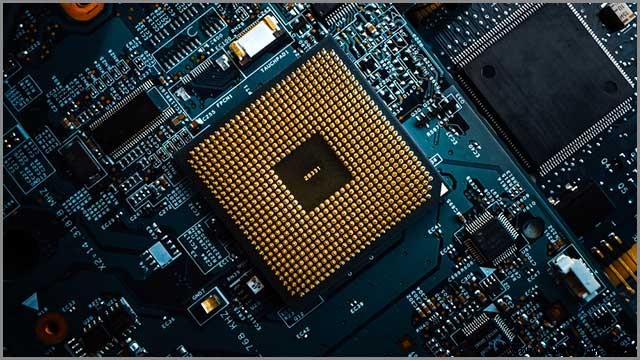
(CPU 프로세서 소켓이 있는 컴퓨터 마더보드)
IPC-6012와 IPC-A-600 표준 간의 몇 가지 주목할 만한 차이점은 아래 섹션에 강조 표시된 대로 주목할 가치가 있습니다.
IPC-6012는 성능 사양에 가깝습니다. 성능 사양인 IPC-6012는 각 PCB 클래스에 필요한 사양 외에 기본 요구 사항을 정의합니다.
Class 1은 제한된 수명과 "단순한"기능으로 구성된 일반 전자 기판입니다. 이러한 간단한 기능은 리모컨과 같은 장치에서 찾을 수 있는 기능입니다. 2등급은 전자제품 전용입니다. 여기에서 보드의 수명이 연장될 것으로 기대할 수 있습니다. 즉, 컴퓨터, 에어컨 또는 TV 화면에서 사용할 수 있습니다. 마지막으로 Class 3 제품이 있습니다. 이것은 클래스 1 및 2 보드에 비해 약간 엄격한 편협입니다. 신뢰성 면에서 높으며 의료 및 군사 산업 전반에 걸쳐 많은 적용 가능성을 찾습니다.
다음은 주목할 가치가 있는 IPC-6012의 고유한 사양 중 일부입니다.
사양이나 도면에 명시되지 않는 한, 인쇄 회로 기판은 IPC-6012 표준에서 요구하는 최소 요구 치수를 충족해야 합니다.
납땜성은 금속이 녹은 땜납에 얼마나 빨리 젖을 수 있는지를 나타냅니다. IPC-6012 표준에 따르면 인쇄 회로 기판의 모든 배치는 납땜성 테스트를 거쳐야 합니다. IPC-6012 표준에 따르면 불량한 납땜성은 심각한 결함입니다.
육안 검사는 모든 인쇄 회로 기판에 필수입니다. 제품 출시 전 육안 검사 또는 최종 품질 확인이 필요합니다. 달리 명시되지 않는 한 모든 패널은 육안 검사를 받습니다.
도체 너비와 간격은 인접한 두 구리 피처 사이의 최소 공극을 나타냅니다. 일반적으로 도체 및 너비 간격에 대한 요구 사항은 0.007인치 미만이어야 합니다. 0.007인치보다 크거나 작은 것은 표준 이하입니다.
핀홀과 흠집은 클래스 2 및 클래스 3 인쇄 회로 기판의 전압 평면에서 허용됩니다. 그러나 가장 긴 치수가 1.0mm를 초과해서는 안됩니다. 또한 측면당 도체 표면이 4개를 넘지 않아야 합니다.
IPC-6012 표준에 따르면 청결은 필수입니다. 여기서 모든 인쇄 회로 기판은 솔더 레지스트 코팅을 적용하기 전에 깨끗해야 합니다. 오염 물질이 포함된 불결한 보드는 시장에 나와서는 안 됩니다. 솔더 레지스트 코팅을 적용하기 전과 후에 청결은 필수입니다.
IPC-6012 표준에 따르면 모든 PCB가 충족해야 하는 몇 가지 구조적 무결성 측면이 있습니다. IPC-6012 표준에 따라 모든 인쇄 회로 기판은 특히 열 스트레스 평가 테스트 쿠폰에 대한 구조적 무결성 요구 사항을 충족해야 합니다.
IPC-6012 표준은 PCB의 생산 설계에 포함되어야 하는 프로세스를 지정합니다. 여기에서 전체 토지 및 간격 사양은 권장 공차 내에 있어야 합니다. 또한 드릴 구멍은 필요한 크기와 품질 요구 사항을 충족해야 합니다. 솔더 마스크 사양도 권장 허용 오차 내에 있어야 합니다.
IPC-6012 표준의 경우 성능 요구 사항이 다소 더 정확합니다. 성능 요구 사항과 관련하여 사용자는 원칙적으로 공급자가 제공해야 하는 것을 고려해야 합니다. 또한 사용된 재료의 유형과 보드의 기능을 입증하기 위해 수행한 테스트를 나타냅니다.
구멍 크기 – IPC-6012 표준에 따라 표준 PCB의 구멍 크기는 직경이 0.8mm여야 합니다. 대부분의 제조업체는 일반적으로 직경이 정확히 1.00mm인 0.040인치의 구멍을 권장합니다.
패턴 정확도 및 패턴 기능 정확도 – 패턴 정확도는 사용자 이동성의 규칙성을 실제 사용자 이동성으로 조정합니다. 패턴 정확도 수준을 높이면 사용자의 이동 패턴이 향상됩니다. IPC-6012 표준에 관해서는 패턴 정확도와 패턴 피처 정확도가 필수적입니다. PCB의 모든 방법은 항상 서로 조화를 이루어야 합니다.
환형 링 브레이크아웃(내부 및 외부) – 환형 링의 주요 목적은 구리 트레이스와 비아 원자 사이에 양호한 연결을 설정하는 것입니다. 환형 링은 회로의 앵커 역할을 합니다. IPC-6012에는 환형 링 브레이크아웃에 관한 사양이 있습니다.
설계 단계에서 링의 너비가 충분하지 않아 환형 링 이탈이 발생합니다. IPC-6012 표준에 따르면 최소 환형 링 너비는 0.007인치여야 합니다. 이렇게 하면 내부 및 외부 탈주를 모두 방지할 수 있습니다.
인쇄 회로 기판 구조의 무결성을 평가할 때 IPC-6012 표준. PCB 제조업체가 주의해야 하는 IPC-6012에 따른 몇 가지 무결성 문제는 다음과 같습니다.
증착과 관련된 문제는 인쇄 회로 기판의 구멍 벽 내부의 상호 연결을 손상시킬 수 있습니다. 결국 인쇄 회로 기판이 원하는 대로 작동하지 않거나 실패할 수 있습니다.
적층 보이드 및 시도는 PCB 제조 중 일반적인 문제입니다. 라미네이트 구멍은 일반적으로 일부 에폭시 수지를 포함해야 하는 영역에 에폭시 수지가 없는 것입니다. 반면에 PCB 내부의 균열은 응력이 상승하는 과정에서 발생할 수 있습니다.
이러한 현상은 열적으로 또는 기계적으로 발생할 수 있습니다. IPC-6012 표준 문서에는 라미네이트 보이드 및 균열을 최소화하거나 방지하는 방법에 대한 사양이 있습니다.
박리는 재료가 층으로 부서지는 것을 특징으로 하는 고장 모드입니다. IPC-6012 문서에는 박리를 방지하는 방법에 대한 조치가 포함되어 있습니다. 레이어로 분리되는 것을 피하려면 올바른 재료가 필요합니다.
해치백은 뚫린 비아홀의 측벽에서 에폭시 수지를 제거하는 공정입니다. 그렇게 하는 이유는 인쇄 회로 기판의 레이어 사이에 우수한 전기적 연결이 있는지 확인하기 위한 것입니다.
IPC-6012 표준에 따르면 사용된 에폭시 수지는 필요한 경우 쉽게 제거할 수 있어야 합니다. 에폭시 수지 재료는 제거가 필요한 경우 쉽게 제거할 수 있는 것이어야 합니다. 레이어 간의 우수한 전기적 연결을 유지하는 것은 신호 라우팅에 필수적입니다.
In the manufacture of printed circuit boards, smear removal is necessary. The purpose of conducting smear removal is to get rid of smear on the hole wall to allow the formation of electrical connections in the circuit’s inner layer.
Additionally, smear removal enables the construction of adequate hole wall adhesion. Based on IPC-6012 standards, smear removal is necessary before through-hole plating.
Hole breakouts, both internal and external, are conditions where the land doesn’t surround holes. The Hole breakouts are problems that a lot of manufacturers face when manufacturing PCBs. Hole problems can occur both internally and externally on a printed circuit board.
On a printed circuit board, lifted places may occur. Raised pads do occur as a result of a combination of physical and thermal issues. If the cushions don’t sit correctly, they may bring about the failure of parts of the PCB or the entire PCB.
Lifted pads naturally happen when attempting to de-solder parts/components from the board. It may also occur if you overwork the joint to an extent where adhesive bonds between the board and the copper are damaged.
Plating thickness is essential in the production of PCBs. When it comes to circuit boards, consistency matters a lot. Plating thickness is a necessary standard for circuit boards. While there’s an official plating thickness standard, there are sizes that are highly common and preferred by manufacturers.
Based on IPC printed circuit board standards, the plating thickness should be 1.57 mm, or approximately 0.062 inches. Even though today’s PCBs’ design and manufacture tend to be smaller, the plating thickness remains the most common thickness for almost all formats.
Today, it’s more accurate to say that there’s a range of standard or typical PCB plating thickness. Some of the most common ones include 0.0031 inches (0.78 mm), 0.093 inches (2.36 mm), and 0.062 inches (1.57 mm).
On printed circuit boards, copper foils act as the base copper thickness applied on inner and outer layers. The IPC standards allow up to a maximum of 10% reduction in foil thickness.
According to IPC-6012 standards, foil thickness (both internal and external) matters a lot. A majority of printed circuit board manufacturers typically use sheets of ½ oz.
A metal core printed circuit board is a type of a PCB consisting of metal materials as its base. The purpose of using metal is to ensure the diversion of heat away from some of the board’s most critical components. Some of the essential areas include the metallic core and the metal heatsink.
IPC-6012 standards indicate that evenly distribution of layers must be on every side of the metalcore in multilayer PCBs. As an example, in a 12-layer board, the metal core must be at the center consisting of 6 layers at the bottom and six layers of the metal core at the top.
As mentioned earlier, IPC-6012 standards are more of a performance specification standard. IPC-6012 standards define default requirements in addition to the specification requirements necessary for each class of printed circuit boards. Some of the essential features here include matters to do with cleanliness, solderability, and conductor surfaces, to mention but a few.
As mentioned earlier, IPC-6012 differs from IPC-600 in several ways. Just like IPC-6012 standards, there are IPC-A-600 standards that PCB manufacturers must comply with at all times. IPC-A-600 has standards for PCB artistry. The IPC-A-600 document consists of comprehensive acceptance criteria for acceptable, target, and nonconforming conditions on bare PCBs.
As mentioned earlier, the IPC-A-600 is IPC’s most widely used standard that IPC has managed to publish. Such makes the IPC-A-600 a natural choice for certification. As mentioned earlier, IPC-6012 standards differ from IPC-A-600 standards. The following are some IPC-A-600 standards that make it different from IPC-6012 standards:
The IPC-6012 doesn’t contain plenty of photos and graphics. Photographs and illustrations are necessary when it comes to the design and manufacture of PCBs. The difference is that IPC-6012 doesn’t contain plenty of pictures and photos, unlike IPC-A-600. Since IPC-A-600 contains many photographs and drawings, a lot of designers prefer it more than IPC-6012 standards.
If you want to design and manufacture IPC PCBs without a lot of trouble, then you may have to stick with boards that comply with IPC-A-600 standards. With such, you’ll get pictures of how to go about doing everything.
IPC-A-600 standards give a printed circuit board assembler the information to do a quality job based on incoming inspection. IPC-A-600 emphasizes on design for inspection (DFI). Design for inspection is a principle of engineering proposing that inspection measurements and methods used in conformity certification require early consideration in product design.
Knowing acceptable conditions means that assemblers won’t have to dig deeper into their pockets if product recalls happening. Getting to know nonconforming conditions save printed circuit board assemblers from costly component mounting operations.
When it comes to PCBs’ design and manufacture, IPC-A-600 emphasizes a lot on Design for Inspection (DFI). Among other things, Design for Inspection in the design and manufacture of PCBs brings about lower costs and high-profit margins. The inability to consider matters to do with Design for Inspection (DFI) can come with high buried costs.
Just like IPC-6012, IPC-A-600 has got some features too. Some of the components or requirements here include plated through-hole requirements, etched dielectric material standards, resin recession, and matters to do with voids.
Most printed circuit board designers seem confused when it comes to choosing between IPC-A-600 and IPC-6012 standards. But the choice between the two depends on the size and the requirements of your project. Manufacturers must comply with several comprehensive inspection specifications found in IPC standards. Designers also need to be careful regarding the design rules required across IPC standards.
IPC-A-600 and IPC-6012 are two of the most primary guiding documents, also going by the name performance and inspection documents. The IPC-6012 is the specification, with the IPC-A-600 being the visual representation of the IPC-6012 form. Here are a few essential things to note when it comes to choosing between IPC-A-600 and IPC-6012 standards:
The Both IPC-A-600 and IPC-6012 are crucial when you want to get high-quality PCBs. Both of them have features and specifications that PCB producers must satisfy.
Even though IPC-A-600 may contain superior standards compared to IPC-6012 standards, both are essential for producing high-quality PCBs. The choice between the two depends on the magnitude and requirements of your project.
As the name suggests, product choice involves choosing or selecting the best product among the available options. Depending on the standards used when making a PCB, you’ll undoubtedly have to choose between a PCB made in compliance with either IPC-6012 or IPC-A-600 standards.
For the best-printed circuit boards, you may have to go with those manufactured under IPC-A-600 standards. The IPC-A-600 standards are slightly superior to IPC-6012 measures. As you may be well aware, the IPC-6012 is a specification that establishes and defines the performance and qualification requirements needed for the fabrication of rigid printed circuit boards.
IPC-6012 for selecting the printed circuit board’s desired size. The conditions here do apply to almost all types of PCBs.
The types of PCBs here include multilayer PCBs, single-sided, active/passive PCBs, HDI, and metal core PCBs. Being a performance specification, the IPC-6012 defines the default requirements in addition to the specifications required.
IPC-A-600 standards are slightly superior to IPC-6012 measures. They are used specifically for upcoming specifications on a printed circuit board.
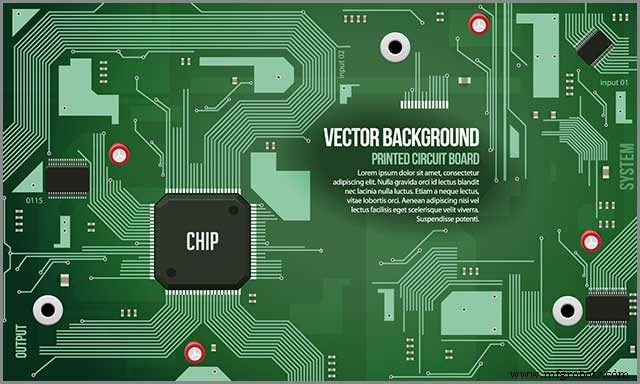
(Printed circuit boards and chips)
Acceptance criteria are the conditions that a product must satisfy or meet to be accepted by customers, users, or other stakeholders. In other words, these are some pre-established requirements or standards that a particular product must meet. IPC-6012 and IPC-A-600 determine product acceptance criteria with suppliers. They consist of measures and means that a product must meet to be deemed acceptable.
For instance, the IPC-A-600 and IPC-6012 contain several acceptance quality levels that determine the maximum number of defective units, beyond which a batch may face automatic rejection. Acceptance limits determine how many samples need to be picked and put under inspection and the boundary between refusal and acceptability for defective products.
Additionally, IPC-A-600 and IPC-6012 have several guides that manufacturers use to provide a standard methodology for inspecting the printed circuit boards. A product must meet some aspects:cleanliness, solderability, conductor width, and spacing, to mention but a few.
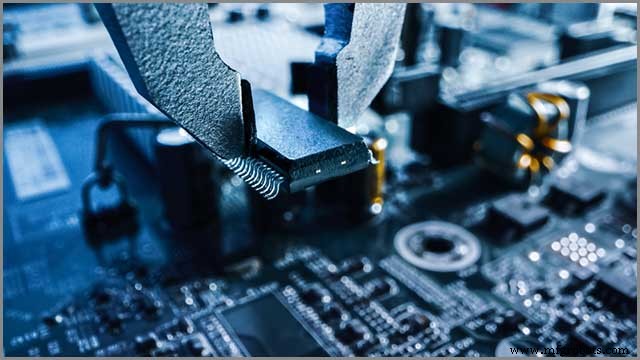
(Advanced PCB board that meets IPC regulations)
Almost all printed circuit board manufacturers claim to be IPC-6012 or IPC-A-600 compliant. Most claim to have the ability to manufacture boards that meet any of the classes. But not all of them are who they say they are. But we at WellPCB are IPC-6012 and IPC-A-600 compliant. We employ IPC-6012 to establish the requirements of our printed circuit boards.
We also use IPC-A-600 for upcoming inspection specifications. Contact us for more information and other capabilities that we have. If you want to know more about our level of quality and certifications, then give us a call. We would be delighted to schedule an informative tour for you.
산업기술
작은 분자, 큰 영향:Everfuel이 녹색 수소 생산을 위한 길을 닦는 방법 수소는 에너지 분야에서 다음으로 큰 개척지입니다. 풍부하고 추출이 용이하며 연료로 사용할 때 CO2를 생성하지 않습니다. 배출. 그것은 기후 변화의 영향에 직면한 세계를 위한 깨끗하고 효율적인 동력원으로서 엄청난 약속을 가지고 있습니다. 지금까지 널리 채택되는 데 몇 가지 주요 장애물이 있었습니다. 압력을 받는 극도로 작은 분자를 포함하는 것은 몇 가지 문제를 제기했습니다. 화석 연료는 수소가 제공하는 많은 이점을 완화하기 위해 주로 수소를 처리
2016년 3월 15일 PCB 제조 및 조립 서비스 제공업체는 누군가의 아이디어를 현실로 만드는 막중한 책임이 있습니다. PCB 설계 및 제조 프로세스의 여러 단계에는 다른 파일과 정보가 필요합니다. 따라서 PCB 문서는 클라이언트가 원하는 것을 정확히 제조업체에 전달하는 데 도움이 됩니다. 또한 필요한 정보를 미리 준비하면 전체 처리 시간을 단축할 수 있습니다. 이를 통해 더 쉽고 빠르고 정확한 견적을 얻을 수 있을 뿐만 아니라 오류 없는 PCB 설계 및 제조를 보장합니다. PCB 설계를 위한 중요한 문서 항목 인쇄 회